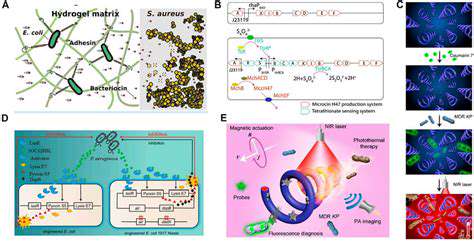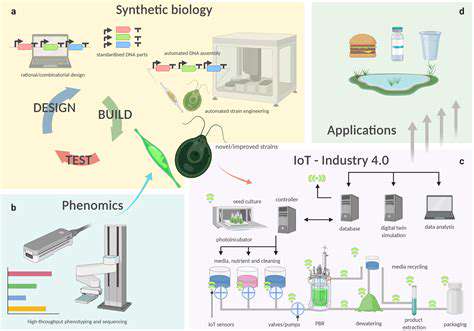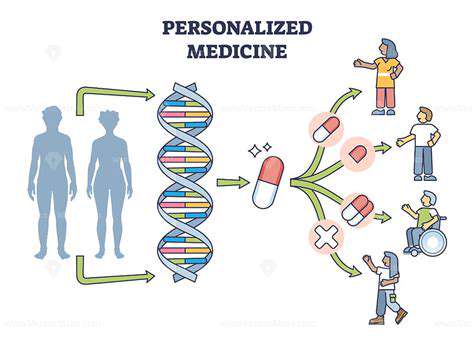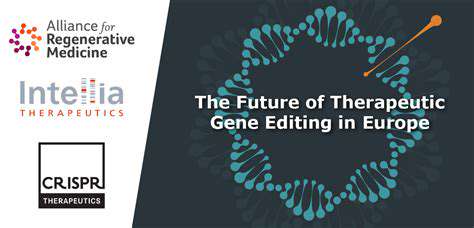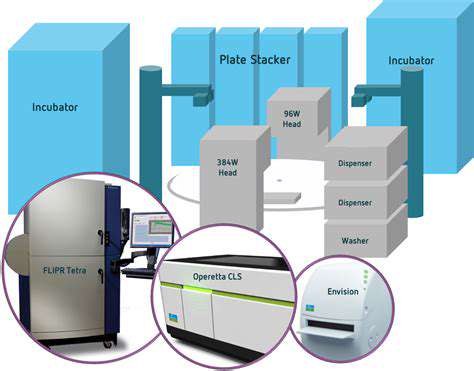Harnessing CRISPR-Cas9 for Disease Resistance
CRISPR-Cas9 technology offers a revolutionary approach to enhancing disease resistance in aquaculture species. By precisely targeting and modifying genes responsible for susceptibility to pathogens, researchers can create fish populations with significantly improved immune responses. This targeted gene editing allows for the development of fish strains that are inherently more resilient to common diseases, reducing the need for costly and potentially harmful prophylactic treatments. The potential for reducing disease outbreaks and associated economic losses is substantial.
This targeted approach promises a more sustainable and effective strategy for managing fish health in aquaculture. Traditional methods often involve the use of antibiotics or other pharmaceuticals, which can have detrimental effects on the environment and potentially contribute to antibiotic resistance. CRISPR-Cas9 provides an alternative that directly addresses the genetic basis of disease susceptibility, thereby leading to healthier and more productive aquaculture operations.
Improving Growth and Yield
Beyond disease resistance, CRISPR-Cas9 holds immense promise for enhancing growth rates and overall yield in aquaculture. By modifying genes involved in metabolism, growth hormone production, and feed utilization, researchers can potentially cultivate fish strains that grow faster and more efficiently. This translates to increased productivity per unit of space and resources, leading to a more economical and sustainable aquaculture industry.
Modifying genes controlling factors like muscle development and fat content also enables the creation of fish with desirable traits for consumer preference, further enhancing the market value of aquaculture products. This targeted manipulation of genes can lead to fish with improved flesh quality, desirable fat content, and overall aesthetic appeal, ultimately catering to evolving consumer demands.
Enhanced Nutritional Value
Gene editing techniques like CRISPR-Cas9 are being explored to enhance the nutritional content of aquaculture products. Modifying genes related to fatty acid composition, protein synthesis, and essential nutrient production can lead to fish with higher levels of omega-3 fatty acids, essential vitamins, or other beneficial compounds. This can enhance the nutritional value of fish for human consumption and potentially address global nutritional needs.
Specific examples include manipulating genes to increase the levels of desirable amino acids or enhancing the bioavailability of certain nutrients. This approach can have significant implications for public health, particularly in regions where fish are a crucial dietary component.
Addressing Environmental Challenges
The application of CRISPR-Cas9 in aquaculture can contribute to a more sustainable and environmentally friendly industry. By engineering fish with enhanced feed conversion efficiency, researchers can reduce the amount of feed required to produce a given quantity of fish. This reduction in feed demand translates to lower environmental impacts, including decreased greenhouse gas emissions and reduced pressure on wild fish populations used as feed sources.
Ethical Considerations and Future Directions
While CRISPR-Cas9 presents exciting opportunities for aquaculture, ethical considerations must be carefully addressed. Issues surrounding the potential impact on biodiversity, the safety of genetically modified organisms, and the equitable access to this technology need to be thoroughly evaluated. Ongoing research and public discourse are crucial to navigating these complexities and ensuring responsible development and application of CRISPR-Cas9 in aquaculture.
Future research should focus on developing standardized protocols for gene editing, ensuring the safety and efficacy of modified organisms, and establishing clear regulatory frameworks for the release of genetically modified aquaculture species into the environment. Transparent communication and public engagement will be essential in building trust and ensuring responsible innovation in this critical field.
Mixed Reality (MR) environments offer a compelling platform for seamless hybrid work experiences. Imagine collaborative design sessions where remote team members can virtually participate in real-time, interacting with shared 3D models and prototypes. This creates a dynamic and engaging experience, fostering a sense of presence and shared understanding among geographically dispersed colleagues. This immersive collaboration transcends traditional limitations, allowing for more efficient and creative problem-solving. The ability to physically interact with digital objects in a shared space fosters deeper engagement and understanding, ultimately leading to better outcomes.
Ethical Considerations and Future Directions

Ethical Implications of AI in Healthcare
Artificial intelligence (AI) is rapidly transforming healthcare, offering unprecedented potential for diagnosis, treatment, and personalized medicine. However, the integration of AI raises significant ethical considerations that must be carefully addressed. The potential for bias in AI algorithms, trained on data that may reflect existing societal inequalities, poses a serious threat to equitable access to healthcare services. Understanding and mitigating these biases is crucial to ensuring fair and unbiased applications of AI in healthcare.
Furthermore, issues of data privacy and security are paramount. AI systems often rely on vast amounts of patient data, raising concerns about the confidentiality and protection of sensitive medical information. Robust data governance frameworks and strict adherence to privacy regulations are essential to safeguard patient data from unauthorized access and misuse. The responsibility for protecting patient data falls squarely on the shoulders of healthcare providers and AI developers alike.
Transparency and Explainability in AI Systems
The black box nature of some AI algorithms can hinder trust and acceptance within the medical community. Lack of transparency in how AI systems arrive at their conclusions can make it challenging to understand the reasoning behind a diagnosis or treatment recommendation. This lack of explainability poses a significant hurdle to clinicians' ability to effectively integrate AI tools into their practice.
Clear and understandable explanations of AI-driven decisions are vital to fostering trust and ensuring accountability. Developing AI systems with inherent transparency and explainability will be key to building confidence in the use of AI in patient care. This approach will also pave the way for more effective collaboration between clinicians and AI systems.
Potential Impact on Healthcare Professionals
The introduction of AI into healthcare is not without potential implications for the roles and responsibilities of healthcare professionals. As AI systems take on more tasks, questions arise about the changing nature of physician-patient relationships and the evolving roles of healthcare professionals. Will AI augment the expertise of healthcare professionals or displace them entirely? Addressing these questions proactively is crucial to ensuring a smooth transition.
The need to adapt to new technologies and embrace new methods of collaboration is crucial to the long-term success of the healthcare industry in the AI era. Investing in continuing medical education and training programs designed to equip healthcare professionals with the necessary skills to work alongside AI systems is essential.
Future Directions for AI in Healthcare Ethics
The development of ethical guidelines and regulations for AI in healthcare is of paramount importance. Establishing clear standards for responsible AI development and deployment is essential to mitigate potential risks and maximize benefits. These guidelines should address issues such as bias detection and mitigation, data privacy, transparency, and accountability.
Ongoing research and dialogue between ethicists, technologists, and healthcare professionals will be critical for navigating the complex ethical landscape presented by AI in healthcare. International cooperation and collaboration are crucial to develop a global framework for ethical AI in healthcare that serves the best interests of patients everywhere.

